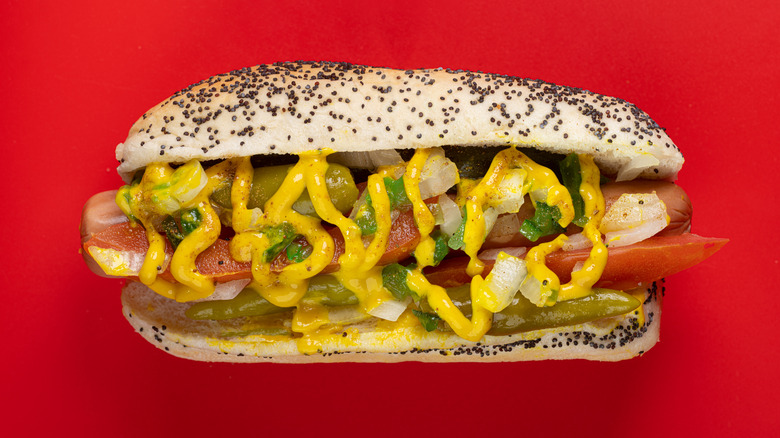The Immigrant Roots Behind Chicago-Style Hot Dogs
Sweet home Chicago! The Windy City is widely known for its rich history, its globally diverse culture, a stunning architectural skyline, its dozens of museums and endless number of entertainment venues, its triumphant sports teams, and its world-renowned cuisines. Some of the best foods you can enjoy in Chicago include deep-dish pizza, Italian beef sandwiches, Original Rainbow Cone ice cream, and by all means, its famous hot dogs!
The Chicago-style hot dog calls for a laundry list of toppings: a generous squirt of yellow mustard, sweet green pickle relish, chopped white onions, tomato wedges, a kosher dill pickle spear, hot sport peppers, and a dash of celery salt. All of these ingredients — no more, no less — are piled onto a boiled or grilled all-beef red hot nestled inside a steamed poppy seed bun. Whatever you do, always steer clear of ketchup. But why? Long story short, true Chicagoans staunchly believe that ketchup is too sweet of a condiment and essentially ruins the flavor of the frank and all the other saltier, more savory toppings.
Many cities across the country have their own specialty regional hot dogs. But where exactly did the esteemed Chicago dog originate? As with many American culinary staples, we have immigrants to thank for this signature fare.
The Chicago-style hot dog was created by German and Jewish immigrants
The first immigrant group to reach the United States en masse was the Germans, who introduced the nation to tubed meats, namely sausages, bratwurst, and hot dogs. In fact, approximately 25% of Chicago's population was either German-born or first-generation German-American by the end of the 19th century, and it has been estimated that nearly 36% of all Chicago butchers during that time frame were German, according to Thrillist. The popularity of the hot dog quickly swept the nation, as it was an affordable, convenient, filling, and portable meal enjoyed by consumers of various socioeconomic groups, particularly for the working class.
At the time, Chicago was the meatpacking capital of the world and led the industrialization of food manufacturing. David Berg, the first hot dog brand in Chicago, was founded in 1860. Nationally acclaimed brands Armour and Oscar Mayer were established in 1867 and 1883, respectively. Soon after, several new Jewish immigrants from Germany took up jobs as hot dog street vendors to make a living for their families. The Jewish community, in fact, introduced the all-beef dogs to abide by their pork-free kosher diet, according to Forbes. Samuel Ladany and Emil Reichl, two Jewish immigrants from Austria-Hungary, opened their own business after noticing the skyrocketing popularity of this new variety. Vienna Beef, the best-selling brand to this day, was founded in 1893.
The Chicago-style hot dog proved to be such an icon that it was able to withstand economic downturns, including the Great Depression. During these trying times, vendors began topping their franks with various readily available vegetables to create a somewhat nutritious meal. As it turns out, the combination of sport peppers, mustard, pickle, relish, onion, tomato, and celery salt was the crowd favorite.

